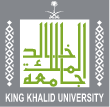OpenCV (Open-Source Computer Vision Library) is a library of programming functions mainly used for real-time computer vision. It is a highly optimized library that supports cross-platform C++, Python, and Java interfaces for Linux, MacOS, Windows, iOS, and Android. OpenCV is open source and can be found on GitHub. There is also a Python package called opencv-python that can be installed via pip.
Q1: What is OpenCV used for?
A1: OpenCV is a software toolkit used for processing real-time images and video, as well as providing analytics and machine learning capabilities. It is mainly used for real-time computer vision and provides programming functions for image/video I/O, processing, display, object/feature detection, geometry-based monocular or stereo computer vision, computational photography, and machine learning & clustering. OpenCV is used by developers to access many advanced computers vision algorithms used for image and video processing in 2D and 3D as part of their programs.
Q2: What are some applications of OpenCV in real life?
A2: OpenCV has a wide range of applications in real life. It can be used for image and video processing, object/feature detection, computational photography, machine learning, and more. OpenCV can be used to detect bone fractures and classify skin lesions for early detection of skin melanomas. It can also be used to remove horizontal or vertical lines from images, which has many real-world use cases. OpenCV can be integrated with the right processor and camera to become a powerful new class of computer vision-enabled IoT sensors, which can scale from simple sensors to multi-camera video analytics arrays.
Q3: what are some real-world applications of OpenCV?
A3: OpenCV has a wide range of real-world applications. It can be used for image and video processing, object/feature detection, computational photography, machine learning, and more. OpenCV can be used to detect bone fractures and classify skin lesions for early detection of skin melanomas. It can also be used to remove horizontal or vertical lines from images, which has many real-world use cases. OpenCV can be integrated with the right processor and camera to become a powerful new class of computer vision-enabled IoT sensors, which can scale from simple sensors to multi-camera video analytics arrays. OpenCV can also be used for rotating images, and it takes advantage of multi-core processing and OpenCL.
Q4: how is OpenCV used in image and video processing?
A5: OpenCV is used in image and video processing to identify objects, faces, or even the handwriting of a person. OpenCV can be used for image and video I/O, processing, display, object/feature detection, computational photography, and machine learning. OpenCV can be used for basic image processing techniques such as extracting and removing horizontal or vertical lines from images. OpenCV can also be used for rotating images, and it takes advantage of multi-core processing and OpenCL. OpenCV has built-in video analytics capabilities such as background removal, filters, pattern matching, and classification. OpenCV can detect bone fractures and classify skin lesions for early detection of skin melanomas. OpenCV is a powerful tool for image and video processing that can be used in various industries and applications.
Q5: How is OpenCV used in object detection?
A6: OpenCV is used in object detection to identify and locate objects within an image or video. OpenCV has a bunch of pre-trained classifiers that can be used to identify objects such as trees, number plates, faces, eyes, etc. The Cascade Classifier class of OpenCV can be used to detect objects present in an image using Haar features. OpenCV also has built-in object/feature detection functionality. OpenCV can be used for object detection with deep learning by using techniques such as R-CNN object detection with Keras, TensorFlow, and Deep Learning. OpenCV can also be used for region proposal object detection with OpenCV, Keras, and TensorFlow. Overall, OpenCV is a powerful tool for object detection that can be used in various applications.
Q6: How does OpenCV use deep learning for object detection
A8: OpenCV uses deep learning for object detection by using techniques such as YOLOv3, R-CNN object detection, and MobileNetSSD. OpenCV can be used to perform object detection using pre-trained models. OpenCV can also be used for region proposal object detection with OpenCV, Keras, and TensorFlow. OpenCV uses deep learning-based object detection to detect obscured objects, such as a horse and its rider jumping a fence flanked by two potted plants. OpenCV can detect multiple types and numbers of objects in a single frame using the Viola-Jones algorithm. OpenCV is a powerful tool for object detection that can be used in various industries and applications.
Q7: How does deep learning improve object detection accuracy in OpenCV
A10: Deep learning improves object detection accuracy in OpenCV by allowing the algorithms to learn and recognize complex patterns and features in the images or videos. Deep learning-based object detection algorithms can detect and localize obscured objects, which is not possible with traditional object detection algorithms. Deep learning-based object detection algorithms can also detect multiple types and numbers of objects in a single frame. Deep learning-based object detection algorithms can be trained on large datasets, which can improve their accuracy and performance. Deep learning-based object detection algorithms can also be used for real-time object detection, which is important in many applications. Overall, deep learning-based object detection algorithms can provide better accuracy, performance, and flexibility compared to traditional object detection algorithms in OpenCV.
